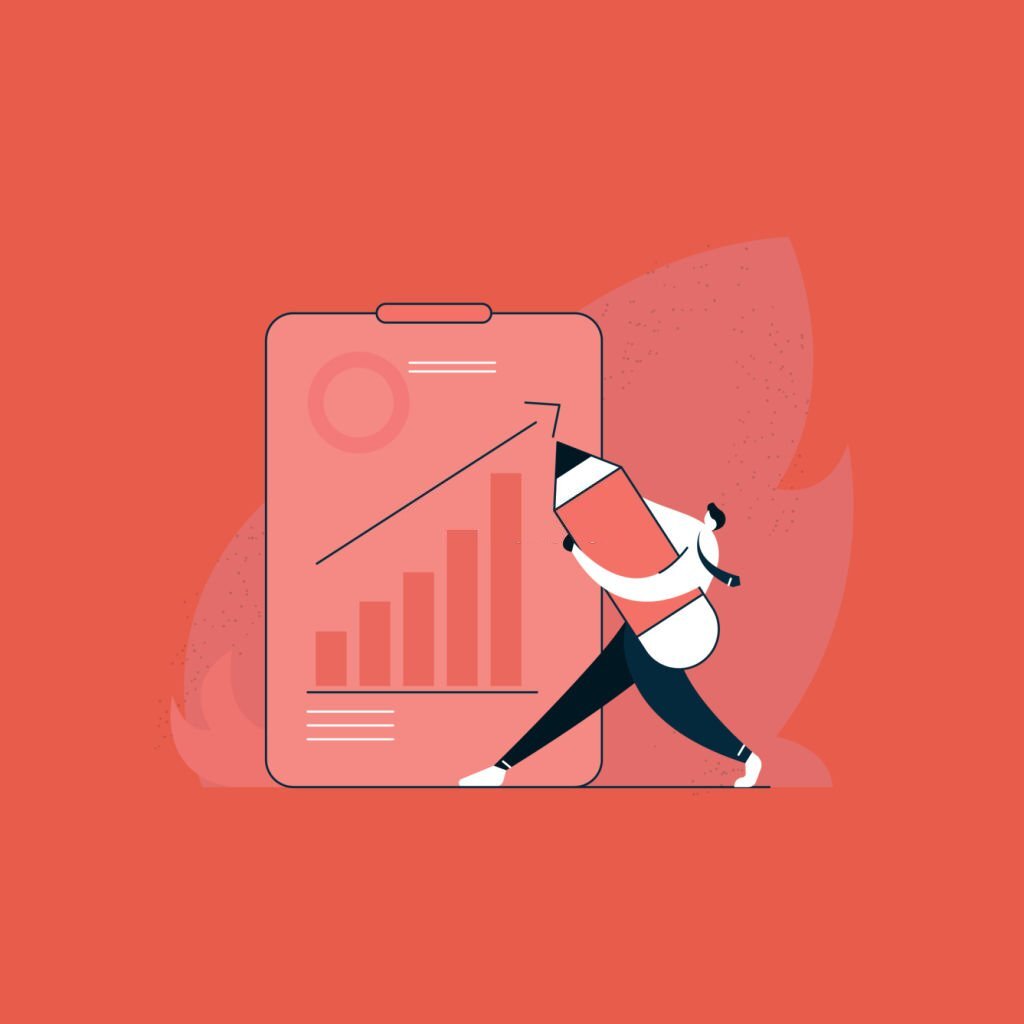Evolving is the first rule of existence and craving change is inevitable which brings us to an undeniable fact that the world we know revolves around creating and creators. Most sought-after professions like astronauts and athletes lost their fame in this era of creators.
A survey from 2019 says 29% of American kids want to be a YouTube star. These social media creators have the vibe of boy or girl next, making followers feel close to them. They command our thought processes on everything from whom to vote for to what social justice issues to support to what to wear to how to make investments and more because they exude authenticity and relatability, which compel us to listen to and trust them. Internet usage went in spades with social media and video-sharing platforms. So where does the creator economy begin? It began with something as simple and as complicated as people expressing themselves.
Evolving is the first rule of existence and craving change is inevitable which brings us to an undeniable fact that the world we know revolves around creating and creators. The most sought-after professions like astronauts and athletes have lost their fame in this era of creators.
29% of American kids want to be a YouTube star, says a survey from 2019.
These social media creators have the vibe of a boy or girl next, making followers feel close to them. They command our thought processes on everything from whom to vote for to what social justice issues to support to what to wear to how to make investments and more because they exude authenticity and relatability, which compel us to listen to them and trust them.
Internet usage went in spades with social media and video-sharing platforms. So where did the creator economy begin? It began with something as simple and as complicated as people expressing themselves.
The Three Waves Behind Creator Economy
Before deep diving into the trends of the creator economy, let’s take a look at how the civilization of the creator economy began.
Mark Andreesen, Co-founder of a16z, likes to explain the internet in three waves.
The first wave was a wave with no revenue being made out of it.
The second wave brought opportunities that creators could monetize their content through ad revenue.
During the second wave, YouTube was the only platform that shared its ad revenue with the creators but Facebook and Twitter who made 92 billion dollars and 3.4 billion dollars through their ad revenue per year, rightly put, were scrounging, meaning creators were not paid for the ads that were put right next to their content.
Disguising ads as confetti was a good idea but too much confetti on the screen seemed violent and brought on something called ad fatigue and both users and creators started complaining about it.
Third wave began when the creators and users were in desperate need of a bridge to connect with one another. Creators craved the freedom to create without restraints and users sought ways to connect with creators to watch or read quality content.
This trend created the third wave which came with the needed bridge connecting subscribers and creators directly, creating a means for creators to profit off of it. The third wave is otherwise known as the creator economy.
When Did Brands Realize The Importance Of Creators?
When a creator has acquired a trusting audience that’s about when the brands make a lunge for them first and then make leverage out of their reach on the platform next. Creators usually have audience demographics based on what they are creating and brands use these creators to advertise and market their products and services. That is the working principle behind influencer marketing. It is one of the rapidly growing fields.
There are 50 million content creators worldwide today. The Total Addressable Market of influencer marketing is 15 billion dollars as of 2022.
Types Of Content Creators:
- Bloggers go by the principle – words have energy and power with the ability to help, to heal, to hinder, to hurt, to harm, to humiliate, and to humble. They use their authentic and active relationship with their readers to help or harm a brand.
- Youtubers are famous because of their on-demand nature of content creation. They are approached by brands to sponsor their videos.
- Podcasting is yet another medium which has gained popularity by its on-demand nature. Brands either sponsor their show or an episode.
- Social posts are used to promote all the above-mentioned types of media on their social media. They don’t just hope that the users will find them on their own platform.
Trends In Creator Economy In 2022
We’ve been watching the creator economy closely and here are the 10 trends that play hardball in 2022.
- Reliable and relatable would never go out of style
Gen Z has warmed up to the creators in 2021 who create content that they can relate with. These are the creators who were pushed to become stars because of their legitimate content. This trend has taken the upward curve in 2022 as well.
The creators come up with ways to create campaigns for the brands in a way that would stir the curiosity of the target audience. 36% of US brands had used TikTok influencers in 2020 and the figure rose to 42% in 2021. All this proves that an even further spike would occur in the brands using influencers of TikTok up to 56% by 2025.
- There will be more collaborations between niche creators and brands in the future
It is unmistakable that the collaborations will gain more momentum. The proof lies in the fact that Instagram had become a platform where reels of just 7 to 15 seconds had gained popularity which is miming TikTok.
YouTube shorts are another instance to show that these platforms had grown to fit the label content platform.
This had brought a surge in cross-platform promotions. Brands will increasingly collaborate with the ideal creators, allowing them to drive creative strategies and increase content reach and acquisition through TikTok’s Spark Ads, rather than battling with other brands.
- Creators will receive more attention from innovative start-ups
Cookies that the websites tried to feed the audience are slowly being wiped out by the creator economy. The market is flooded with brands looking for niche creators to partner with.
A survey that included 2000 emerging creators proved that 77% of these creators had gained high-earning opportunities from start-up brands because they have innovative and original ways for the audience to connect with the creators.
- NFTs and social tokens are soaring
In recent years, cryptocurrency, blockchain, and NFTs have begun to shift the momentum away from giants like Facebook and YouTube and toward start-ups that deliver content through creators to users. As a result, content creators will be able to monetize their content and engage with fans in new ways than ever before; and fans, likewise, will be able to easily and securely access their favourite content creators.
Thus, thousands of new creators will be able to develop quality content without being hindered by traditional monetization barriers. The global market for in-app games totals $150 billion a year. It isn’t very far for gaming NFTs to grow into that or any type of business to grow into that.
- Amazon’s Drop
Amazon has caught the creator economy wave and now rides it. Amazon has seen an opportunity to collaborate with curators and international trendsetters and makes money off of their work. Positions for new creators to join The Drop have been left open by Amazon.
Users can now register for notifications on drops of influencer curations and influencer-designed outfits under the website’s Drop section. Popular creators like @fashion jackson, @imma.gram, @sivanayla, and many others have already featured their work in The Drop.
- Reforming the framework of the creator economy
Due to Gen Z’s preference for part-time work over traditional employment options, payroll, and benefits, including health insurance, need to provide more flexibility to cover part-time team members worldwide.
As the number of part-timers grows, it will become increasingly important to build a culture and engage them. Previously, part-timers were an afterthought or not part of the team at all. It is also possible that the freelance market might even offer some of the core services in addition to hiring.
- The entire consumer experience is under the creators’ control
Another emerging advancement of e-commerce infrastructure will include every touchpoint, from finding to post-purchase, for a fully fluid buying experience.
As a result, eCommerce facilitation platforms will be required to provide collaborations through app marketplaces or establish internal product adjacencies to empower creators with the whole tech stack.
Within app networks, companies like Rewind and Shogun are now being developed to provide plug-and-play technologies and minimize this difficulty for creators.
- Micro-influencers will become increasingly dominant
A survey conducted among the brands on what type of influencer they prefer to work with has shown that only 22% of the brands want to work with celebrities, 31% with mega influencers, 64% with macro-influencers, 77% with micro-influencers, and 25% with nano influencers. Let’s take a quick detour on what these types of influencers mean.
- Mega influencers are usually celebrities with an epic number of followers. They cherry-pick and usually work with leading brands.
- Macro influencers are high-profile successful online experts. There is a sea of macro influencers and while it is most beneficial for the brands there is also a possibility of scammer influencers who could have brought their followers.
- Micro-influencers are known and trusted for their knowledge in their niche. They have a thousand to forty thousand followers. Their game is different because it is the brands that would have to gain their confidence in them. After all, these influencers wouldn’t jeopardize the trust their followers have in them.
- Nano influencers have very few followers, probably even fewer than a thousand. Their niches are highly specialized.
- Instagram is the creator’s favourite
Instagram has a high degree of engagement that might assist creators to produce overall more appealing content. In 2021, about 60% of full-time creators thought that Instagram had contributed to their audience growth. 88% of the creators use Instagram stories while only 42% use TikTok.
- Brands by creators
A growing number of creators are emerging as entrepreneurs. Many influencers have the chance to work with businesses throughout their careers. In actuality, people don’t always have absolute freedom to express themselves while collaborating.
Influencers can launch a business leveraging their social media marketing, content development, and self-promotion expertise. Since work based on social media can be transient, starting a business can offer an alternate path to financial security in this relatively new and unpredictable market.
Conclusion
It is clear that it is a win-win situation for both the brands as well as for the creators. Furthermore, proof that this trend is taking the rollercoaster that is going only up is the fact that Amazon is dipping its feet in it. It could be considered good news that this trend is still in its early stages which is a euphemism for there is room for many new creators and brands.




